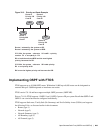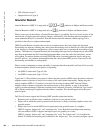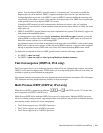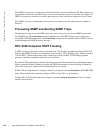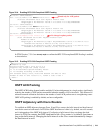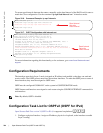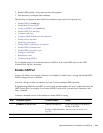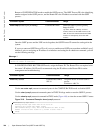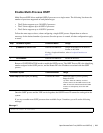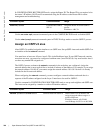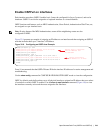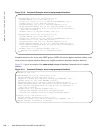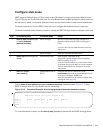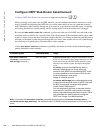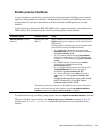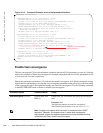
Open Shortest Path First (OSPFv2 and OSPFv3) | 707
Enable Multi-Process OSPF
Multi-Process OSPF allows multiple OSPFv2 processes on a single router. The following list shows the
number of processes supported on each platform type.
• The E-Series supports up to 30 OSPFv2 processes.
• The C-Series supports up to 6 OSPFv2 processes.
• The S-Series supports up to 4 OSPFv2 processes.
Follow the same steps as above, when configuring a single OSPF process. Repeat them as often as
necessary for the desired number of processes. Once the process is created, all other configurations apply
as usual,
Return to CONFIGURATION mode to enable the OSPF process. The OSPF Process ID is the identifying
number assigned to the OSPF process, and the Router ID is the IP address associated with the OSPF
process. .
Once the OSPF process and the VRF are tied together, the OSPF Process ID cannot be used again in the
system.
If you try to enable more OSPF processes than available Layer 3 interfaces you will see the following
message.
Step Command Syntax Command Mode Usage
1
ip address ip-address mask CONFIG-INTERFACE Assign an IP address to an interface.
Format: A.B.C.D/M
If using a Loopback interface, refer to Loopback Interfaces on
page 427.
2
no shutdown
CONFIG-INTERFACE Enable the interface.
Command Syntax Command Mode Usage
router ospf process-id [vrf {vrf name}] CONFIGURATION Enable the OSPFv2 process globally.
Range: 0-65535
vrf name: Enter the VRF key word and
instance name to tie the OSPF instance to the
VRF. All network commands under this OSPF
instance are subsequently tied to the VRF
instance.
Message 2
C300(conf)#router ospf 1
% Error: No router ID available.



